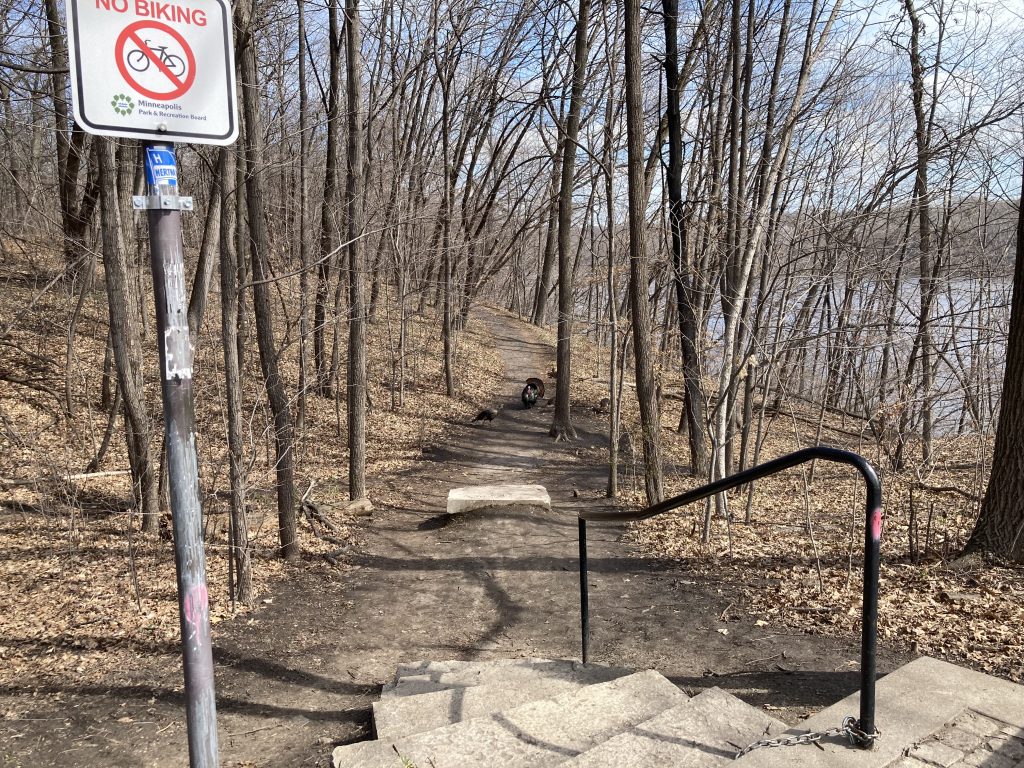walk 1: 30 minutes with Delia, neighborhood
walk 2: 75 minutes to the library
I haven’t walked to the library in a long time. 5 or 6 or 7 years? Why has it been so long? Partly the pandemic and the library almost being burned down and then closed for a long time are to blame, but it’s also all the running and having a dog. If I have any time or energy left to walk, I need to take Delia the dog along, and the library is too far for her. Also, she’s not allowed inside.
It’s more than a mile, but less than 2 one way. It was great. I listened to Taylor Swift’s new album on the way there, and Beyoncé’s on the way back (Cowboy Carter). Wow! The Tortured Poets Department was good but Cowboy Carter was amazing.
10 Things
- a big white dog sitting quietly and calmly in a dirt back yard next to a chain link fence
- a cedar fence that looked almost new, with shiny wood, bulging out towards the sidewalk — what happened?
- red tulips in full bloom right up against the foundation of a house
- a big tree with a full set of yellowish-green leaves
- a terraced yard, all dirt, looking neat and ready to be filled with flowers
- a little free library packed with books, its glass door wide open
- music blasting from an open door at the Trinity Church, playing “Shake It Off”
- 2 squirrels winding up a tree, one chasing the other, their nails scratching the rough bark
- my favorite stone lions in front of a house wearing purple flower headbands in honor of spring
- a big moving truck backed into a driveway blocking all of the sidewalk and half the street
earlier today
This past Saturday, I took a class on public art and ekphrastic poetry with the new poet laureate of Minneapolis, Heid E. Erdrich. A great class. When I signed up for it, I was just interested in taking a class with Erdrich and learning more about ekphrastic poetry; I didn’t realize that public art would also be a part of it. Very cool. Anyway, the class inspired me to think more deeply about public poetry projects. I have several ideas for my own, with very little understanding of how to make them happen. Perhaps studying other examples will help educate and inspire me. Plus, studying them is another way to learn more about the place I live. First up: Sidewalk Poetry St. Paul
Sidewalk Poetry, St. Paul
Sidewalk Poetry is a systems-based work that allows city residents to claim the sidewalks as their book pages. This project re-imagines Saint Paul’s annual sidewalk maintenance program with Public Works, as the department repairs 10 miles of sidewalk each year. We have stamped more than 1,200 poems from a collection that now includes 73 individual pieces all written by Saint Paul residents. Today, everyone in Saint Paul now lives within a 10-minute walk of a Sidewalk Poem.
This art project began with previous Public Art Saint Paul City Artist Marcus Young in 2008 under the name “Everyday Poems for City Sidewalks,” and continues today with evolved stamping approaches, as well as poetry submission and review processes. Our 2023 Sidewalk Poetry accepts poetry submissions in Dakota, Hmong, Somali, Spanish, and English. The poetry on our streets celebrates the remarkable cultures that make our City home and that makes our City strong. With this as a beginning, other languages may be added in years to come.
Sidewalk Poetry St Paul
I think the first step for me in getting to know this project is to visit some of the poems. I’d like to start running to them! Here’s a map to help me out: Public Art Sidewalks
I think I’ll start (tomorrow) with a favorite poet of mine, Naomi Cohn. She has one on the Southeast corner of Juno and Finn. Very close to it is one by Pat Owen, on the southside of Juno between Finn and Cleveland.
Almost forgot to post this: the first song on Beyoncé’s album, “American Requiem” sings about the wind!
Can we stand for something?
Now is the time to face the wind (Ow)
Coming in peace and love, y’all
Oh, a lot of takin’ up space
Salty tears beyond my gaze
Can you stand me?
Can we stand for something?
Now is the time to face the wind
Now ain’t the time to pretend
Now is the time to let love in
